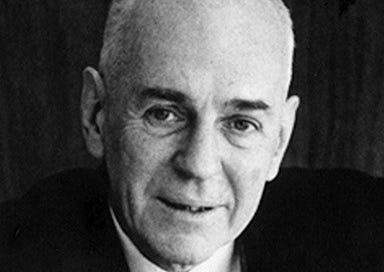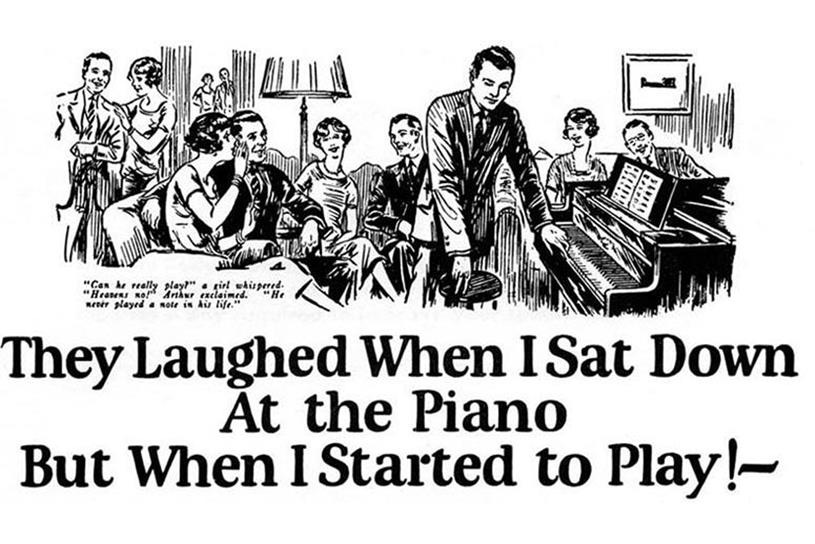I hope you’re enjoying what a friend of mine recently called my “master class in DR.” Let’s continue the class with a lesson on something near and dear to my heart: copywriting.
As some of you know, I have a degree in journalism and began my professional life writing for online business publications during the dot-com era. But when I got into marketing and joined the ‘As Seen on TV’ club, a mentor of mine insisted I go back to school (so to speak) and study the writing techniques of one man — John Caples.
A Caples principle is one of my “10 Greatest Marketing Concepts” (#4). Today, we’ll go deeper into his teachings.
DR Dynamite!💥
You know the drill. This is the part of my newsletter where I share wisdom from the ‘Masters of Marketing,’ specifically tried-and-true (T&T) techniques from the world of direct-response advertising. And let me tell you: It doesn’t get more tried-and-true than Caples. In fact, the name of his seminal work is “Tested Advertising Methods.”
Here’s a fun and fascinating GPT-generated biography of today’s Master.
John Caples is a legend in the world of marketing and advertising. Dubbed the ‘father’ of direct response advertising, his early career was a journey of discovery. After dropping out of Columbia University due to public speaking anxiety, he served in the U.S. Navy and held a few other jobs before returning to Columbia to study writing.
Caples’ advertising career started in 1925 at Ruthrauff & Ryan, a leading mail-order company at the time, where he quickly learned the power of direct response copywriting. But it was one headline in particular — written for a home-study course offered by the U.S. School of Music — that catapulted him to fame.
In 1927, Caples joined Batten, Barton, Durstine & Osborn (BBDO) as a copywriter and account executive, where he spent the rest of his career, barring a brief stint serving in the Navy during World War II. At BBDO, he held roles such as VP and creative director, continually pushing the envelope of advertising effectiveness through rigorous testing and research.
Caples was an advocate for evidence-based advertising, pioneering the use of split-run ads and other scientific methods to maximize ad performance. His methods were initially met with skepticism but eventually became an accepted part of ad testing and development.
A prolific writer, Caples authored the classic “Tested Advertising Methods” in 1932, and he taught copywriting at Columbia Business School from 1952 to 1954. His work and contributions to the field have earned him a place in the Copywriters Hall of Fame.
Want to improve the selling power of your copy? Follow this 17-point Caples checklist:
1. Use present tense, second person.
2. Use subheads.
3. Put captions under illustrations.
4. Use a simple style of writing.
5. Choose simple words.
6. Give free information.
7. Write selling copy, not style copy.
8. Arouse curiosity.
9. Make your copy specific.
10. Use long copy.
11. Write more copy than is necessary to fill the space.
12. Avoid helping your competitors.
13. Don’t overstate or understate your case.
14. Avoid trick slogans.
15. Study the selling copy in mail-order catalogs.
16. Make every advertisement a complete sales talk.
17. Urge the reader to act.
I could write at length about each of these, but I only have the space to expand on a few of them.
Use present tense, second person.
Incorrect: “People will enjoy a sense of security with Goodyear tires.”
Correct: “You enjoy a sense a security with Goodyear tires.”
Of all the words that sell, “you” is one of the most powerful. That’s because people don’t care what benefit other people will get from a product. They care what benefit they will get from that product.
Sorry, let me rephrase that.
You don’t care what benefit other people get from a product, do you? You care what benefit you get from that product.
Want to write better copy? Follow Caples’ simple advice and “keep hammering at the reader with—you—you—you.”
Write selling copy, not style copy.
“Style copy is based on the assumption that readers are swayed by flowery language and elaborate adjectives,” Caples writes. It “consists mainly of unsupported claims whereas selling copy supports its claims with proof.”
What kind of proof? In DRTV, we use three main types:
Visual proof in the form of demonstrations and torture tests
Social proof in the form of testimonials and endorsements
Scientific proof in the form of studies and lab testing
Caples concludes: “If there is any doubt in your mind as to whether to use style copy or selling copy, remember that advertisers who can trace the sales results from their ads use selling copy.”
Avoid helping your competitors.
The idea here is that you should always sell the benefits of your specific brand, not the benefits of an entire category. Many other Masters have echoed this point. For instance, it’s the essence of Rosser Reeves’ USP concept, which Jay Abraham expanded on in last week’s report.
Caples is saying that without a clearly communicated point of difference, your copy will end up driving other people’s sales. This is even more true today than it was in his time. For example, I’m hearing that at least half of people who watch a DRTV commercial head straight to Amazon. They don’t call the 800 number. They don’t type in the web address or Google the brand name. They go straight to a virtual store with limitless shelf space and no doubt find dozens of items similar to the one being advertised, often at cheaper prices.
Even that is understating the problem because it suggests the playing field is level. It isn’t. As Al Ries & Jack Trout established, most advertising tends to benefit the market leader. In fact, people tend to assume advertising is from the market leader even when it isn’t. You can demonstrate this for yourself. A few days after the Super Bowl or some other major advertising event, choose a clever commercial that wasn’t for the market leader. Then, ask a few friends or family members what brand the commercial was promoting — and watch them guess the market leader almost every time.
The final (5th) edition of Caple’s master work was published in 1998. As you can see from the above, he is still definitely worth reading. The title of another of his books neatly sums up why: He can teach you how to make your advertising make money.
News(letters) You Can Use 📰
The Great Cialdini has a highly useful report in his latest newsletter on how a single word yielded a 300% improvement in response.
Cialdini writes:
To gauge the effectiveness of a simple line of social proof messaging, the NYX Professional Makeup team conducted an A/B test on the product pages of one of their websites. They tested two variables against the original design to measure their effectiveness.
Beneath the ‘buy’ button, one variation had the phrase: “Seventy-one beauties have viewed this product today.”
The other variation had the phrase: “Seventy-one beauties have purchased this product today.”
Both variations improved response significantly compared to no phrase at all. But while “viewed” delivered a 32% click-thru rate and 33% transaction rate improvement, “purchased” delivered a whopping 42% and 100% boost!
I’m calling this the “purchasing beauties” technique, and I’m definitely saving it for later.
Chart Watch👁️
Although it has been a bit cool, the summer season is in full swing on the DRMetrix report. Lawn care and personal care dominate. There are products for watering your lawn (#1 Pocket Hose Copper Bullet, #8 Hydro Steel Pro), repairing your lawn (#11 Hydro Mousse) and also illuminating it (#10 Bionic Floodlight).
There are products for shaving your head (#2 MicroTouch Titanium Head Shaver), soothing your sciatica (#5 BeActiv Plus) and supporting your feet (#7 Copper Fit Arch Relief Plus).
And if you just want to sit in a cool place (#17 Arctic Air Pure Chill) and read a book (#22 Eye Candy), the DRTV advertisers have got you covered there, too.
🛑Only Premium Subscribers past this point.🛑
Here’s what’s in the rest of today’s newsletter:
Recent Tests. Updates on the latest commercials being tested weeks before anyone else knows about them.
Promising Products. New products I think have potential for direct marketers.
Old Gold. A list of what was topping the charts seven years ago and might be ready for a comeback.





